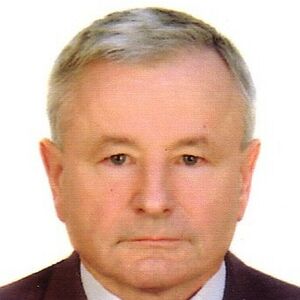ВКР (1229297), страница 10
Текст из файла (страница 10)
One of the objectives is geomarketing analysis of pedestrian flows. To solve the problem of detection and recognition of pedestrians on the streets, you need to use the methods of recognition of images, which will effectively analyze the video stream. First, you need to give the definition of the basic concepts in the field of pattern recognition.
Class – a set of objects that share common properties. Objects of the same class have a «similarity». For recognition of the problem can be certainly any number of classes. The number of classes is usually denoted by the letter S.
Classification – is the process of determining the class of the object labels, according to the description of some properties.
Verification – the process of mapping an object instance to a model of an object or class description.
The image – the name of the field in the feature space, which displays a plurality of objects and phenomena of the material world.
Symptom – quantitative description of a property of the test object or phenomenon.
Pattern recognition can be regarded as a problem corresponds search between the source data element and a specific class in the middle allocation of essential attributes or properties of most of these elements.
In general release, the following groups of methods of recognition of Obra-call [7]:
– a comparison with the sample, this group includes the classification methods based on the distance to the nearest neighbor or group of neighbors, the classification by the distance to the nearest neighbor. Also in the group include the structural methods of recognition;
– the statistical methods used by some statistical in-formation in the solution of the problem of recognition;
– neural networks have a particular model of organization, which is similar to the neural structure of the brain. Mainly neural network learns from the experience. Many problems cannot be solved by the traditional computing methods can be effectively solved by using neural networks.
1.3.2 Geographic Information Systems
MapInfo Professional - Geographic Information System, Predna value for collecting, storing, displaying, editing, and analysis of spatial data. Localized version is produced in Russia. [43]
The basic functionality includes the following features:
– support for common data formats, including Office formats, formats, relational and spatial databases, graphical data formats;
– the use of images in nearly any format;
– access to hybrid cards and photographs Microsoft Bing;
– tools for creating and editing graphics and tabular data;
– wizard cards;
– data publishing wizard with the ability to setup a joint-mortar.
Figure 1.4 – Objects of the geomarkenting’s analysis
Provides ArcGIS Spatial Analyst wide range of functions of the space-governmental modeling and analysis, and also allows you to perform a joint analysis of vector and raster graphics [44]. Module ArcGIS Spatial Analyst is a powerful tool for spatial data analysis and allows you to add specific functionality to the ArcView 8.1, ArcEditor and ArcInfo, combining the basic functions of the Spatial Analyst extension modules and the ArcView ARC GRID ArcInfo system for workstations. With ArcGIS Spatial Analyst can be used to perform, for example, the following operations:
– receive new data by calculation;
– definition of spatial relationships;
– the search for suitable locations that meet certain conditions;
– calculation of the cost of the move.
Spatial Analyst and MapInfo Professional are not cross-platform applications. During use of the community they have been expanded to a significant number of modules, resulting in a cost increase. GIS can be used as a means of imaging data collected in real time. Therefore, the main task is the development of hardware and software for data acquisition and processing, and display the results in GIS Provides ArcGIS Spatial Analyst wide range of functions of the space-governmental modeling and analysis, and also allows you to perform a joint analysis of vector and raster graphics [44]. Module ArcGIS Spatial Analyst is a powerful tool for spatial data analysis and allows you to add specific functionality to the ArcView 8.1, ArcEditor and ArcInfo, combining the basic functions of the Spatial Analyst extension modules and the ArcView ARC GRID ArcInfo system for workstations. With ArcGIS Spatial Analyst can be used to perform, for example, the following operations:
– receive new data by calculation;
– definition of spatial relationships;
– the search for suitable locations that meet certain conditions;
– calculation of the cost of the move.
Spatial Analyst and MapInfo Professional are not cross-platform applications. During the use of the community they have been expanded to a significant number of modules, resulting in a cost increase. GIS can be used as a means of imaging data collected in real time. Therefore, the main task is the development of hardware and software for data acquisition and processing, and display the results in GIS.
1.4. Overview pedestrian recognition systems
Today there are many companies that offer their products intelligent video surveillance as «Safe City». Next will be considered the system «Safe City».
1.4.1 Synesis
Synesis – developer of intelligent video surveillance and business intelligence based on computer vision. Revealing the poten al analytics, our products allow you to register data about the movements of people and vehicles in the camera's field of view, and to identify the different situations without operator intervention. The results of the work of video analytics used by corporate users for operational notification in the archive search, visual audit of the business process and the preparation of analytical reports.
The project «Safe City» – a software package with the use of video analytics solutions, which helps to quickly identify and respond quickly to all kinds of emergency situations, as well as the time to take action to eliminate their effects [46].
The modern city is a complex layered structure. It consists of many sub-systems – transport, telecommunications, electricity and water supply, as well as many others who operate and interact with each other.
To control the operation of all urban systems, the security of every citizen and all vulnerable points of the city infrastructure, preparation and archiving of all important events and the rapid provision of information to all interested services needed are not isolated street surveillance cameras, and integrated information system that can accumulate, merge, analyze and aggregate disparate data from multiple sources. That such a system is a «Safe City». Pictures 1.5 and 1.6 show the organizational structure of the system «Safe City».
Date center
Access on the Internet
Access on the mobile
IP camera
Remote object
Application
Processing server
Coder
Operator of the dispatcher center
Services
of safety
Municipal
service and others
Figure 1.5 – The Centralized system architecture «The safe city» [45]
Date center
Operator of the dispatcher center
Services
of safety
Municipal
service and others
Application
Processing server
Access on the mobile
Access on the Internet
IP camera
Coder
Figure 1.6 – The Decentral system architecture «The safe city» [45]
Video analytics Synesis for public spaces in automatic mode-sky allows to recognize and signal the occurrence of disturbing situations, such as:
– prohibited parking,
– gathering of people,
– rapid movement (jogging)
– penetration of the forbidden territory,
– people falling on the rails,
– unattended object, etc.
Computer vision algorithms enable highlight useful information from a huge data streams and minimize the human factor in the city surveillance system.
1.4.2. ISS
ISS – a recognized expert in the development of integrated solutions VideoMost-agement and intelligent detection tools, video analysis and controlbased integration platform SecurOS.
S
Multi-level situation-dependent centers: global monitoring
oftware and hardware-software complexes SecurOS family focused on technically complex solutions for building large distributed security systems in the commercial and public sectors. For industrial holding companies, transport, financial sector, trade, etc. Below in picture 1.7 is represented by the product «Safe City third generation », which has the following composition.Safe city of third generation
End-to-end systems of safety of
activity of the population
Situation-dependent video analytics
Specialized video analytics: facial recognition and numbers
Subsystem of processing incidents
Date centers: virtualization and network storages
Interactive plans of objects: 2D, 3D, integration with GIS
Photo and video fixing of
violations of traffic regulations
Figure 1.7 – Composition of an integrated solution [46]
In the present system, situational and video analytics service:
– to detect potentially threatening the safety of abandoned objects;
– identification of mass gatherings in open areas and inside buildings;
– entry into the forbidden zone, the fall in the way of the subway passengers;
– detection of potential offenders in parking lots, the suppression of acts of vandalism at the monument;
– detection of the appearance of the visitor in the entrance area of municipal institutions are not equipped with access control systems;
– vehicle identification, creating a potentially dangerous situation for the safety of road users.
These systems solutions have a large number of modules, therefore, to solve the problem of detection of pedestrians on the street, they will be ineffective and costly.
Приложение Г
(обязательное)
Пример результата обучения классификатора Хаара
<?xml version="1.0"?>
<opencv_storage>
<haar type_id="opencv-haar-classifier">
<size>
20 20</size>
<stages>
<_>
<!-- stage 0 -->
<trees>
<_>
<!-- tree 0 -->
<_>
<!-- root node -->
<feature>
<rects>
<_>
4 10 6 2 -1.</_>
<_>
6 10 2 2 3.</_></rects>
<tilted>0</tilted></feature>
<threshold>1.1531069874763489e-02</threshold>
<left_val>-8.4957557916641235e-01</left_val>
<right_val>8.4483522176742554e-01</right_val></_></_>
<_>
<!-- tree 1 -->
<_>
<!-- root node -->
<feature>
<rects>
<_>
3 9 14 4 -1.</_>
<_>
3 11 14 2 2.</_></rects>
<tilted>0</tilted></feature>
<threshold>1.1394539847970009e-02</threshold>
<left_val>-9.0220332145690918e-01</left_val>
<right_val>7.0154142379760742e-01</right_val></_></_>
<_>
<!-- tree 2 -->
<_>
<!-- root node -->
<feature>
<rects>
<_>
0 4 12 3 -1.</_>
<_>
4 4 4 3 3.</_></rects>
<tilted>0</tilted></feature>
<threshold>-2.7947429567575455e-02</threshold>
<left_val>6.2067091464996338e-01</left_val>




















